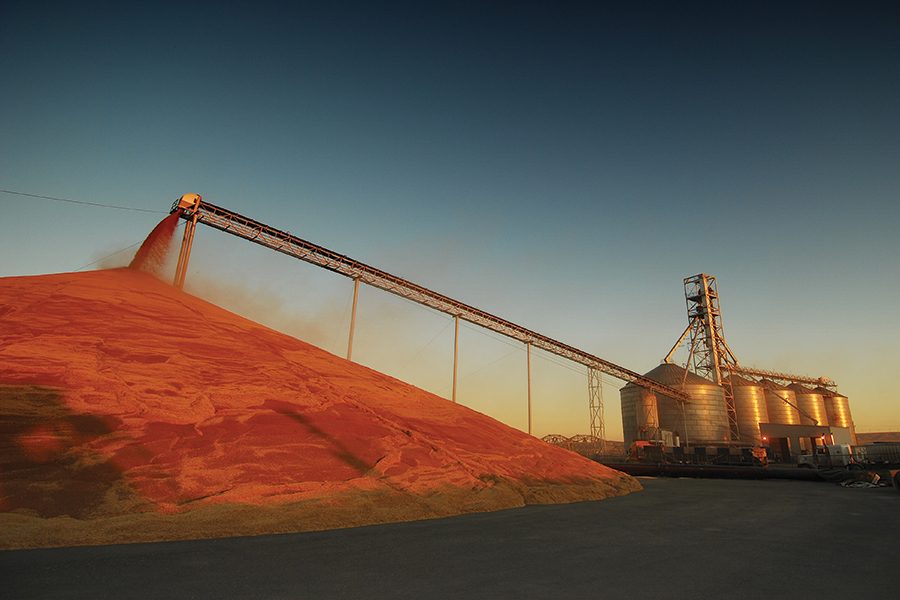
Home » Washington ag is ready to put pests, plague and politics in rearview mirror
Washington ag is ready to put pests, plague and politics in rearview mirror

June 15, 2021
How tough was 2020 for Northwest agriculture?
This tough: Discovery+ is streaming “Attack of the Murder Hornets,” a 90-minute documentary about the hunt for bee-murdering, crop-threatening Asian giant hornets in Washington state.
The documentary crew followed Sven Spichiger, managing entomologist for the Washington State Department of Agriculture, and his team of hornet hunter-eradicators as they pursued the devastating invaders in Whatcom County, hoping to prevent them from spreading further and decimating critical honey bee populations.
From pests to plague to politics, 2020 was a devastating year for Washington’s $11 billion agriculture sector and its $22 billion food processing sector and not just because of some plus-size hornets.
Exports of Washington-grown agriculture products fell 5% in 2020 – a year that should have seen exports rise as trade wars gave way to new trade agreements with key partners.
Now, 2021 is in full swing. Asparagus is in. Hay is being cut, and soon, cherry pickers will get to work.
And Washington’s 36,000 farms and ranches and its vast network of food processors and support industries have some reason to be more optimistic. The new trade agreements, Covid-19 vaccinations and even a Mexican Supreme Court ruling on potato imports are signs of a turning tide.
“Farmers are always optimists,” said Pam Lewison, director for the Washington Policy Center Initiative on Agriculture and a Columbia Basin farmer.
“It’s an oxymoron, but I always tell people that we are realistic optimists.”
Trade wars ease
Trade wars led to, among other things, higher tariffs and a 42% reduction in exports to China from 2017-19. Retaliatory tariffs put hundreds of millions of dollars worth of Washington ag exports at risk. With new deals in place, the wars are receding.
The United States-Mexico-Canada Agreement (USMCA), known as the “new NAFTA”, took effect in July 2020.
The United States-China Phase One Trade Agreement was signed in January 2020 on the eve of the pandemic, committing China to buying more U.S.-grown products. The deal led to a modest uptick in exports by the year’s end, although not enough to close the gap left by the trade wars.
The U.S.-Japan Trade Agreement took effect Jan. 1, 2020, and committed to granting “substantial” market access to the U.S. by phasing out most tariffs. The deal helped offset losses associated with the U.S. withdrawal from the Trans-Pacific Partnership trade alliance.
But there is a big hitch in exports, courtesy the pandemic. A shipping container shortage is leaving U.S. produced goods on the wrong shore.
The containers that bring sneakers, televisions and other goods to American consumers return to Asia empty. It is not profitable to let them linger long enough to pick up outbound ag products.
U.S. Rep. Dan Newhouse, R-Sunnyside, and more than a hundred members of Congress signed a bipartisan letter dated March 9, 2021, demanding that Commissioner Michael Khouri of the Federal Maritime Commission, investigate and act against predatory practices.
“(Ocean carriers) serve as an integral link between American producers and overseas customers, without which contracts cannot be met and the ability to compete in or even access foreign markets is threatened,” it said.
In the interim, the Northwest Seaport Alliance, consisting of the ports of Seattle and Tacoma, is developing “near dock” facilities to speed up container loading in a bid to give domestic products a shot at space on boats. The upgrades were expected to be ready in spring 2021.
Key crops
Washington’s biggest crops play an important role in the economy of the Mid-Columbia, particularly potatoes, which are grown and processed into frozen french fries and other products here.
The state’s potato growers discarded 300 million pounds of spuds in 2020 as Covid-19 shutdowns drove down demand for french fries from restaurants and food service operations. That was better than anticipated. The industry initially expected to discard 1 billion pounds.
Massive giveaways and a Midwestern freeze helped use up some of the surplus.
Potatoes are the state’s third largest crop with a pre-pandemic value of $934 million, according to the state Department of Agriculture. Demand is expected to revive along with in-person dining.
The shipping container shortage is the biggest challenge to exporting frozen french fries.
But the industry received good news in April 2021, when the Mexican Supreme Court issued a ruling that finally opened the market to U.S. fresh potatoes. It could offer a $100-plus million shot in the arm.
Apples are Washington’s top crop with a value of nearly
$2 billion. Growers expect to harvest 122 million bushels in 2021, down from 134 million a year ago. The pandemic exacerbated labor shortages and curtailed the rollout of the Cosmic Crisp apple, which made its debut in 2019.
Barring bad weather, Northwest cherry growers anticipate a 2021 crop of 23.8 million 20-pound boxes, up from 20 million a year ago. Final figures were not available at press time, but the pandemic was good for the industry as consumers chose healthy fruit to eat at home, said Jon DeVaney, president of the Washington State Tree Fruit Association.
Washington is the nation’s second leading grower of grapes, thanks in part to its wine industry. 2020 was a challenging year with sales down in every channel and nearly 1 million fewer cases shipped. But economist Chris Bitter gave growers and winemakers something to cheer in March 2021: Shipments of Washington wine packaged for consumers grew by 8% in the first quarter of 2021 compared to the same period in 2020.
The state Legislature
Green legislation and new overtime rules passed by the 2021 Legislature will have a significant impact on agriculture, said Lewison of the Washington Policy Center.
Lawmakers passed an agriculture overtime bill that she called a “workable” compromise in need of refinement. The new rules required dairies to pay overtime after 40 hours as of last November 2020 to workers who were plaintifs in the Martinez-Cuevas v. DeRuyter Bros Dairy Inc. case that went to the state supreme court. Other dairy workers are eligible for overtime starting July 15.
Everyone else had to implement the new pay rate of time and a half after 55 hours on Jan. 1, 2022. It drops to time and a half after 48 hours in 2023 and to time and a half after 40 hours in 2024.
The bill shields farm employers from lawsuits seeking retroactive pay to Nov. 4, 2020, which covers all current active lawsuits. Lewison said the agriculture community is looking for seasonable flexibility.
The state’s new low carbon fuel standard and cap and trade rules to reduce greenhouse gas emissions will affect farms soon, she said, with fuel prices expected to rise 20 cents a gallon beginning in 2022. Farm exemptions will ramp down, leading to a potential 50-cents-per-gallon new fee by 2030.
“It’s almost cost prohibitive for farming,” Lewison said. “That makes it more so.”
Focus Magazine Agriculture + Viticulture
KEYWORDS june 2021





